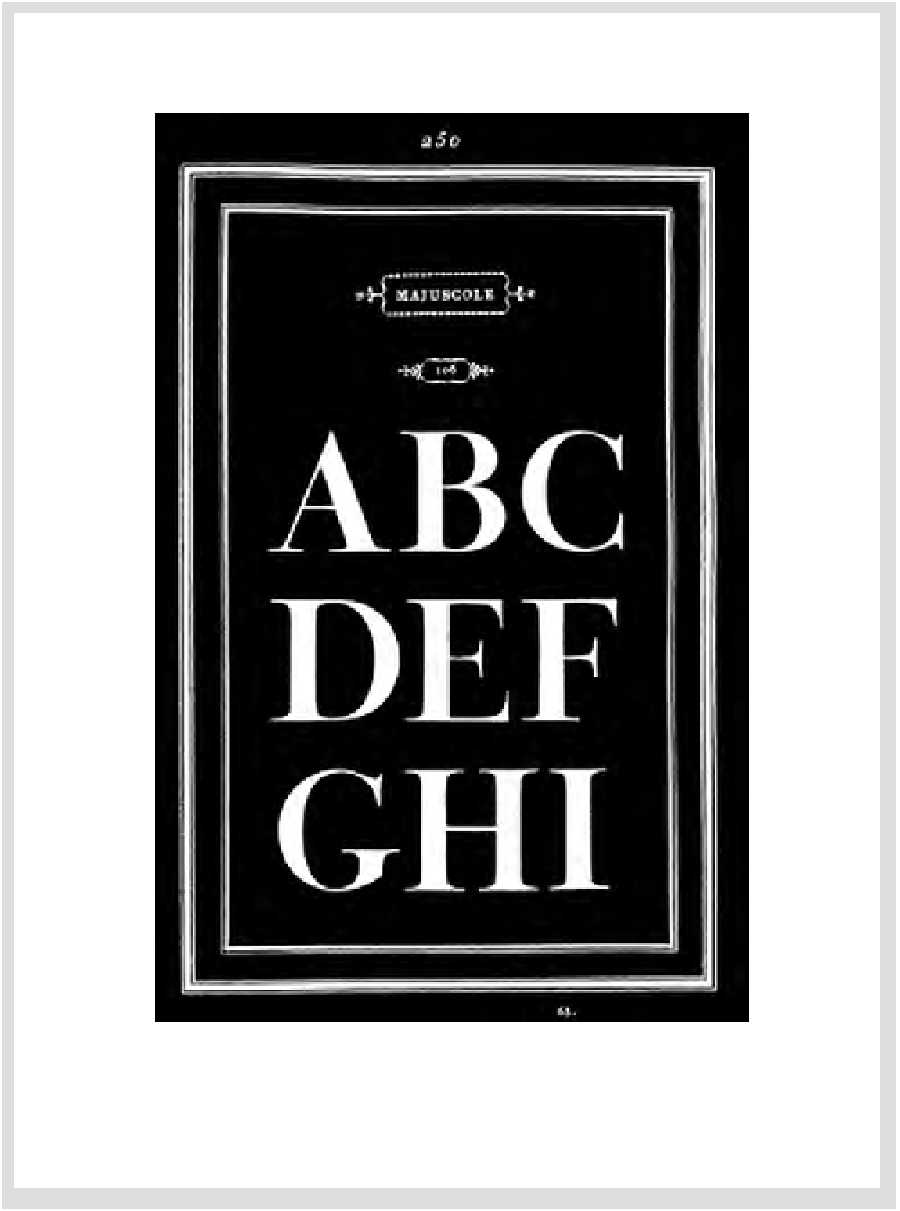Graphics Reference
In-Depth Information
MODERN
Bauer Bodoni
Additional Modern fonts
The word
modern
is a relative term. Often,
we use it interchangeably with the word
contemporary
; sometimes it is used to identify
movements in the arts representing a radical
break with tradition. In typographic design,
Modern
identifies typefaces of the late 1700s
with flat, unbracketed serifs, extreme contrasts
between thick and thin strokes, and geometric
construction. The influence of writing and
calligraphy upon type design was replaced
by mathematical measurement and the use
of mechanical instruments to construct
letterforms.
After the death of type designer and
printer Giambattista Bodoni, his widow and
foreman published the
Manuale tipografico,
,
displaying specimens of the approximately
three hundred type fonts designed by Bodoni.
The page reproduced here in its actual size
shows the dazzling contrasts and vigorous
proportions found in Modern Style typefaces
(Fig.
13-4
.). Thick-and-thin oxford rules (see
Fig, 5-17) echo and complement the letters'
stroke weight.
Modern Style typefaces were
widely used for book text type during
the nineteenth century and have enjoyed
continued acceptance for more than two
centuries. Numerous variations have been
designed, from extreme fineline versions to
ultrabolds, and from very narrow, condensed
fonts to wide, expanded letterforms.
Many contemporary fonts bear the names
of eighteenth-century designers such as
Bodoni, Didot, and Walbaum.
13-4
Page 250 from the
Manuale tipografico
, 1818.

